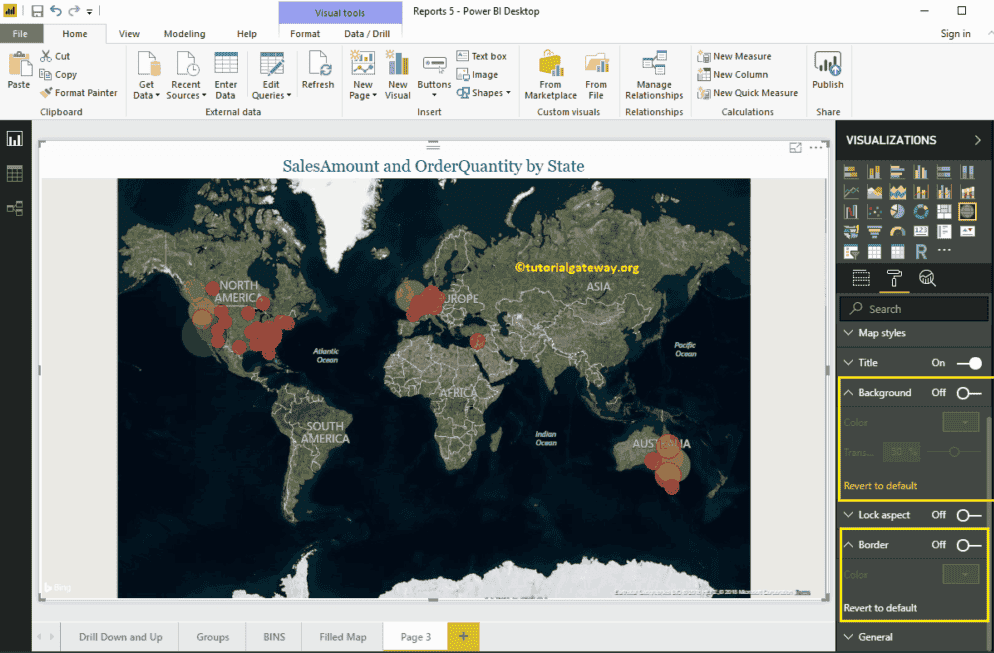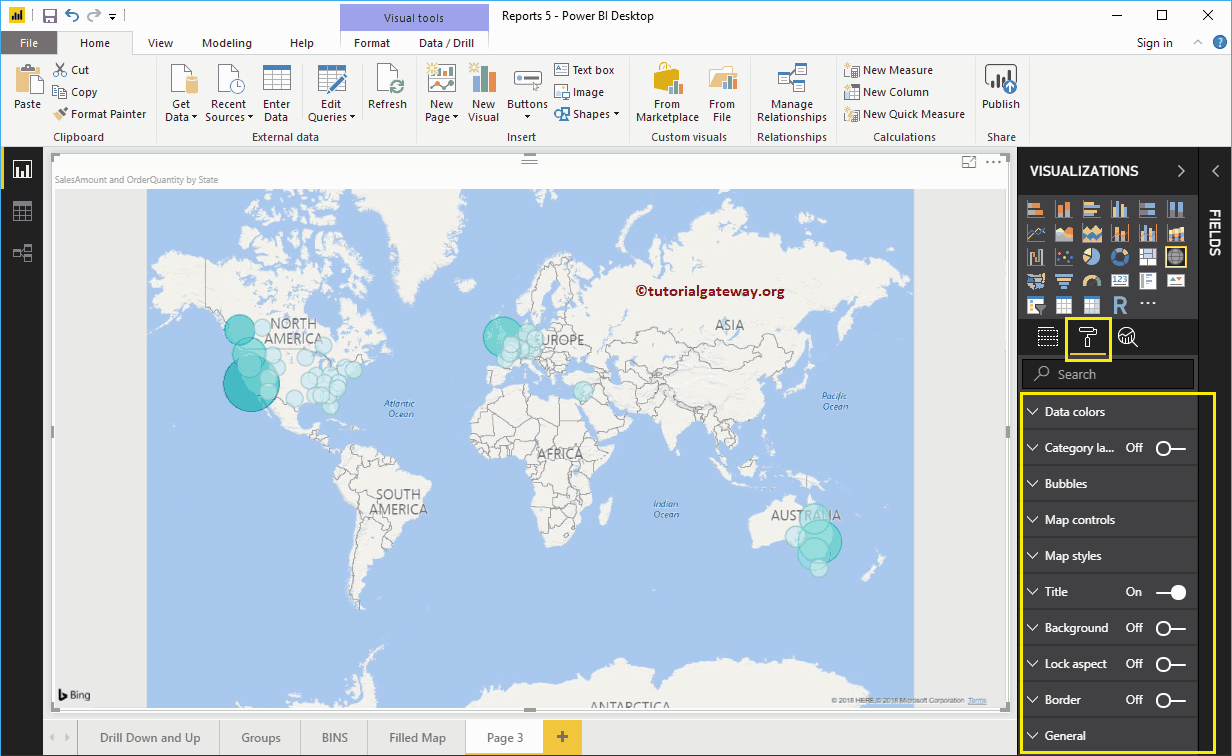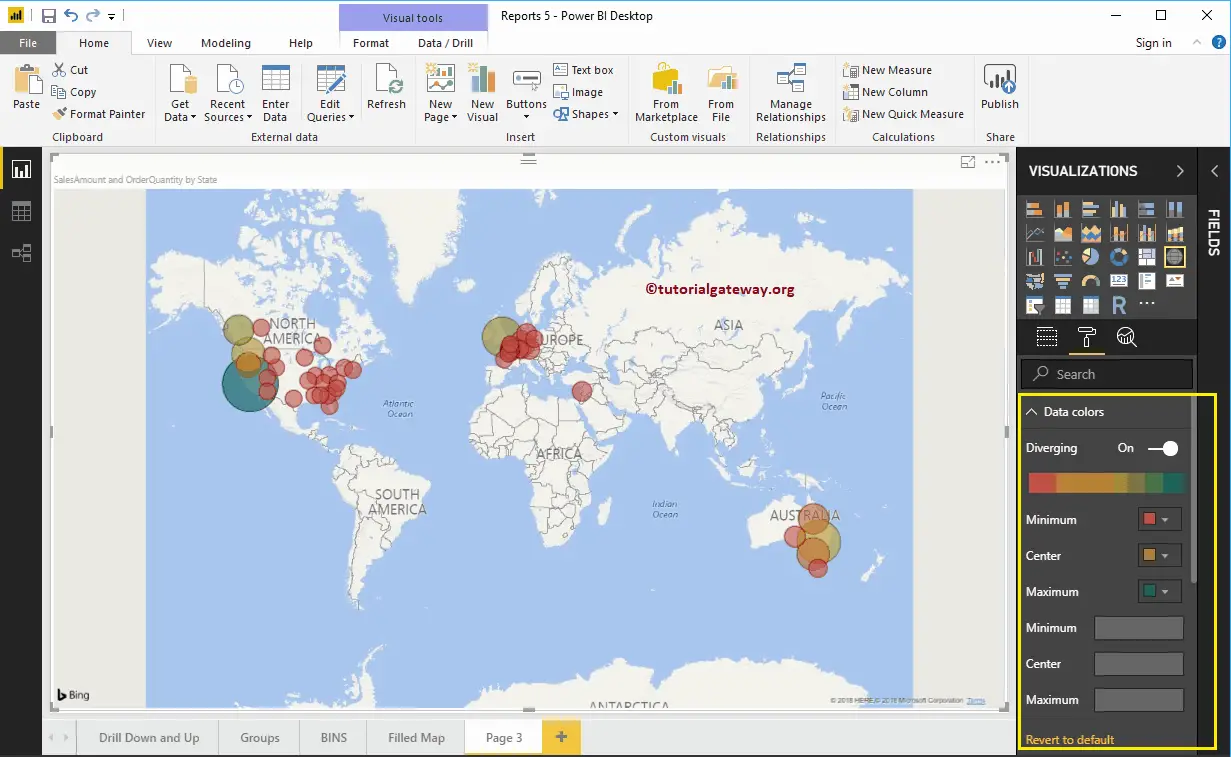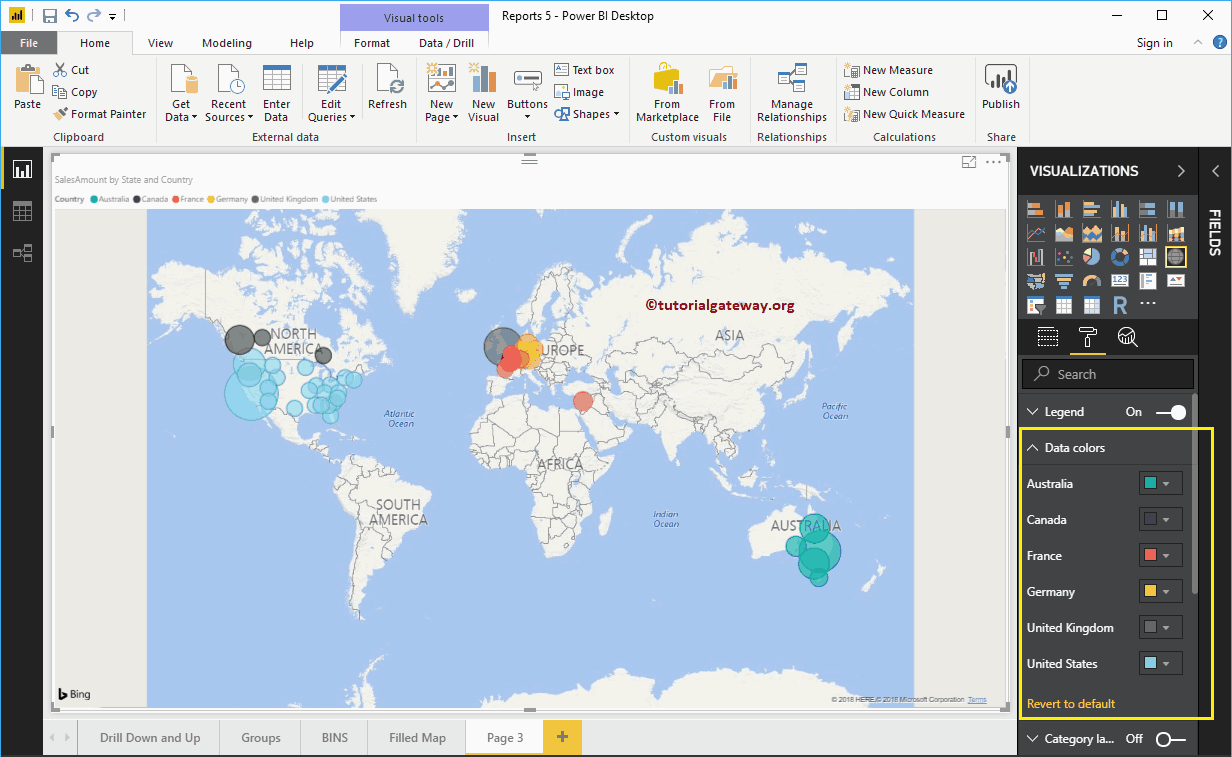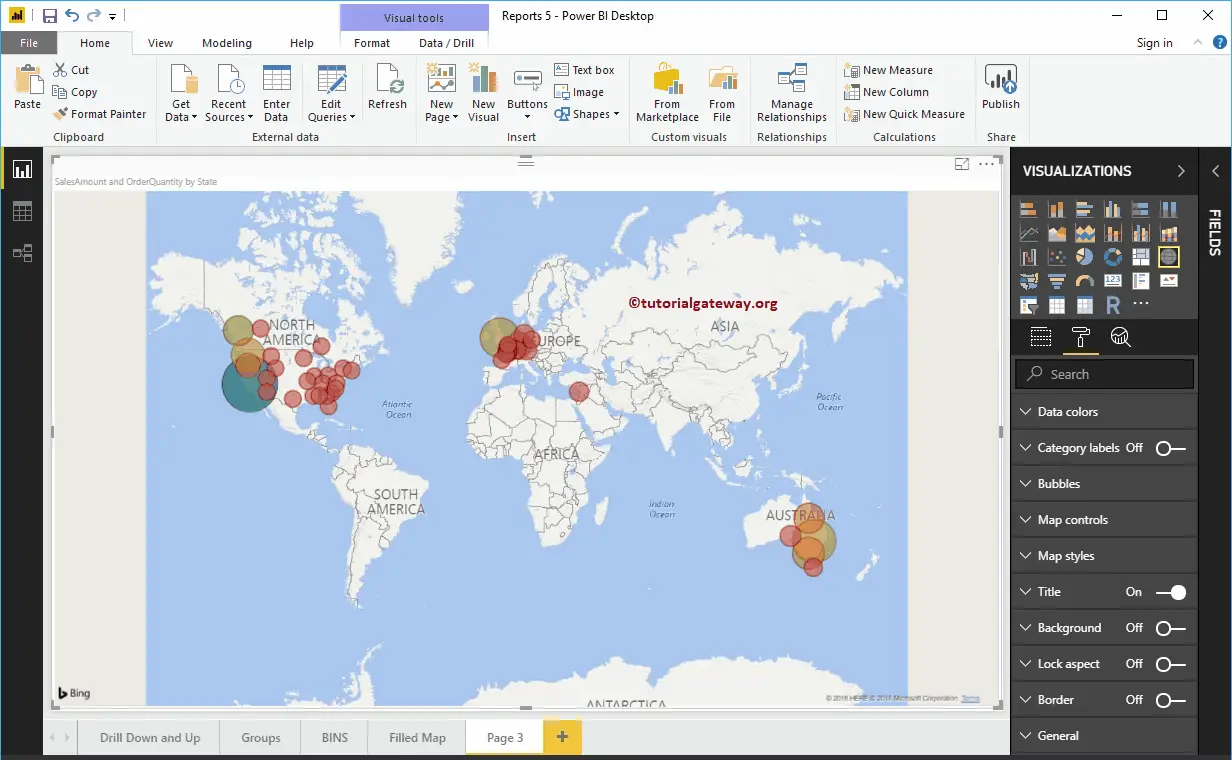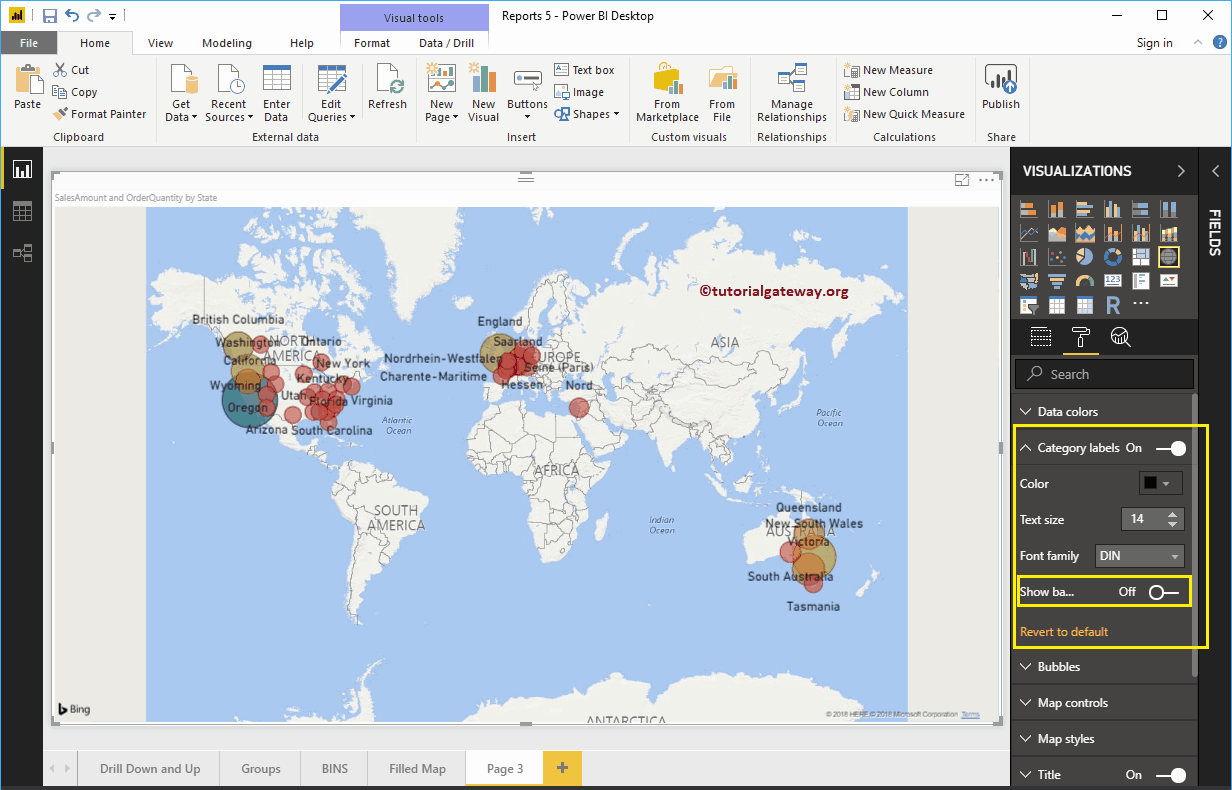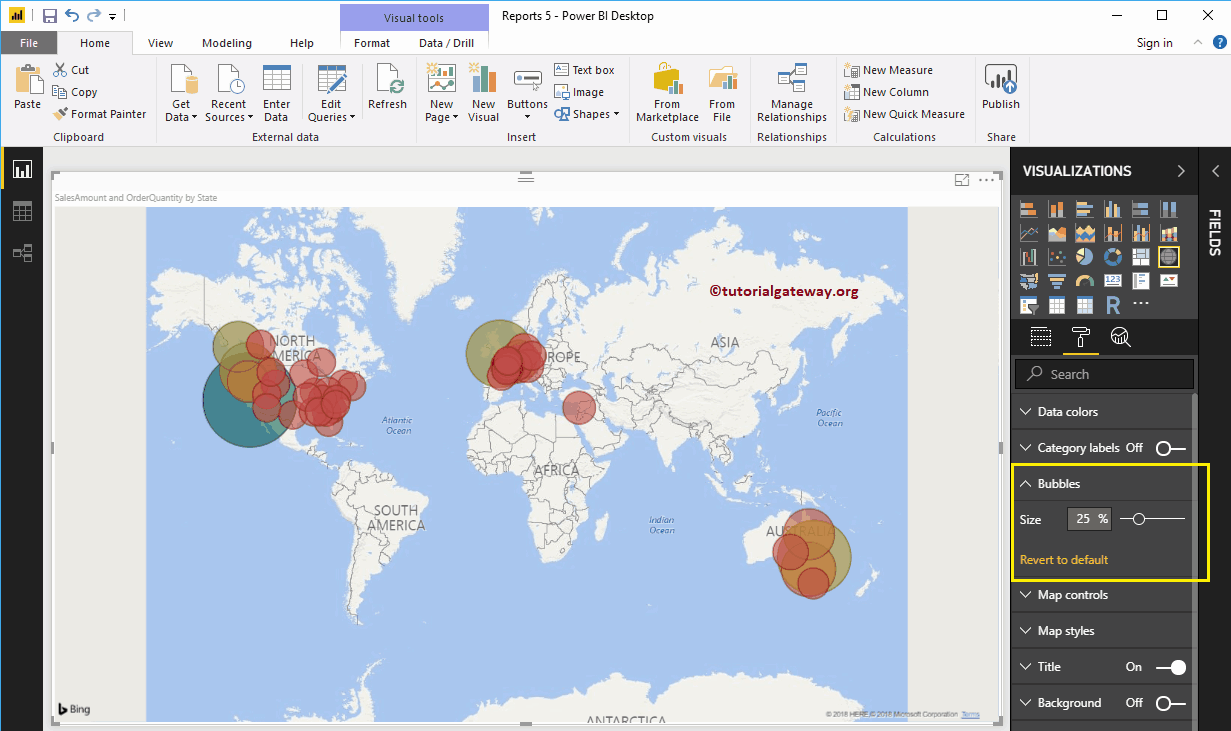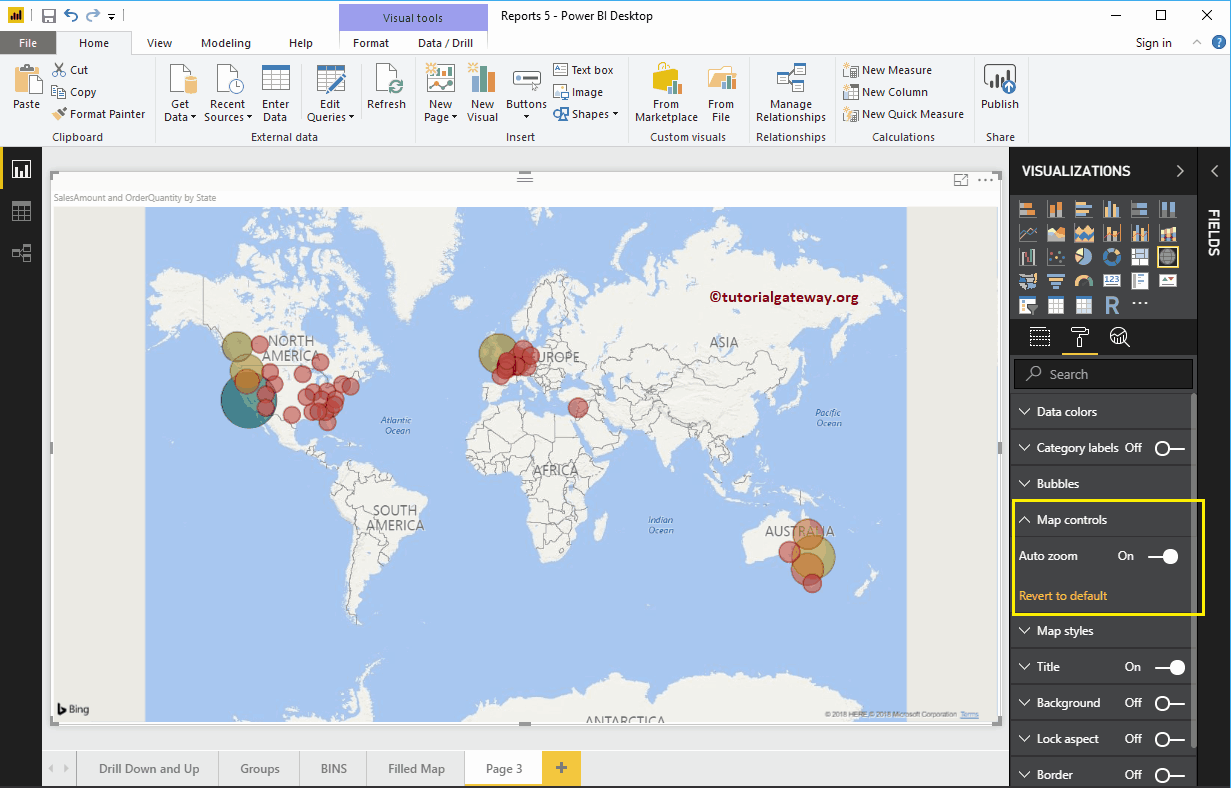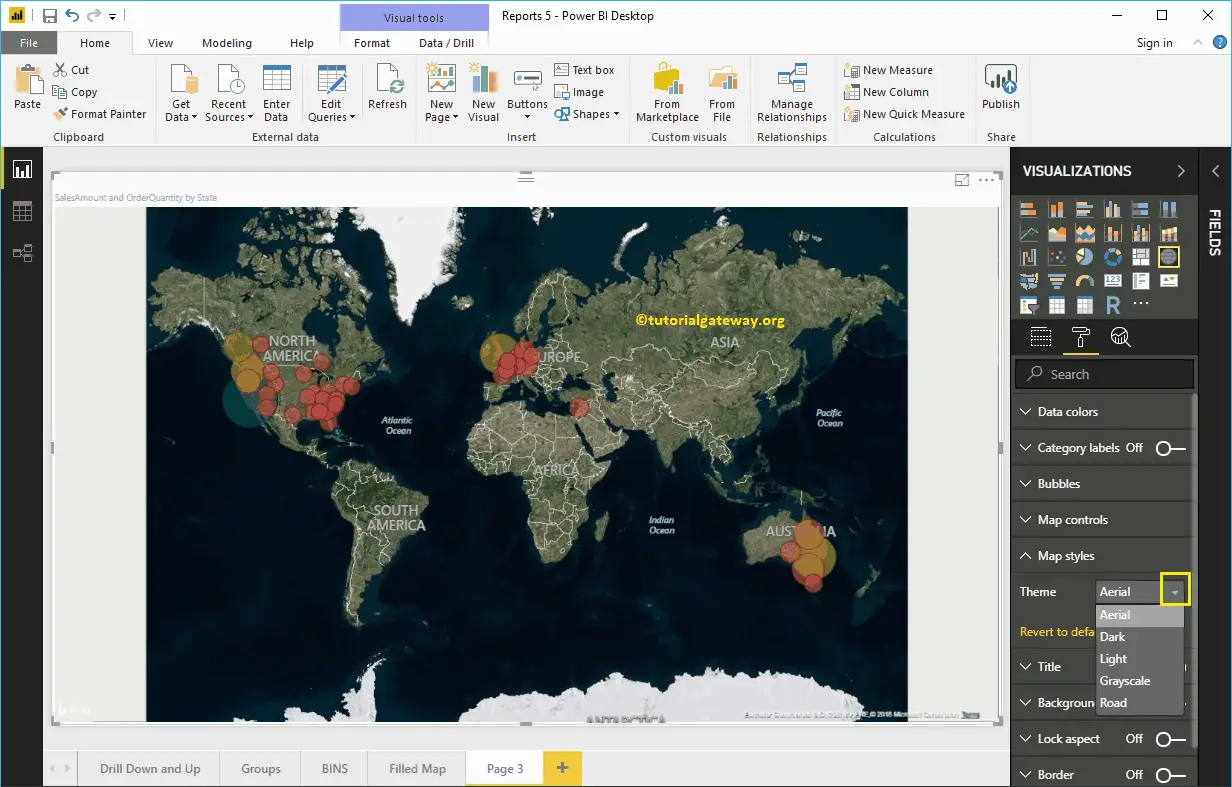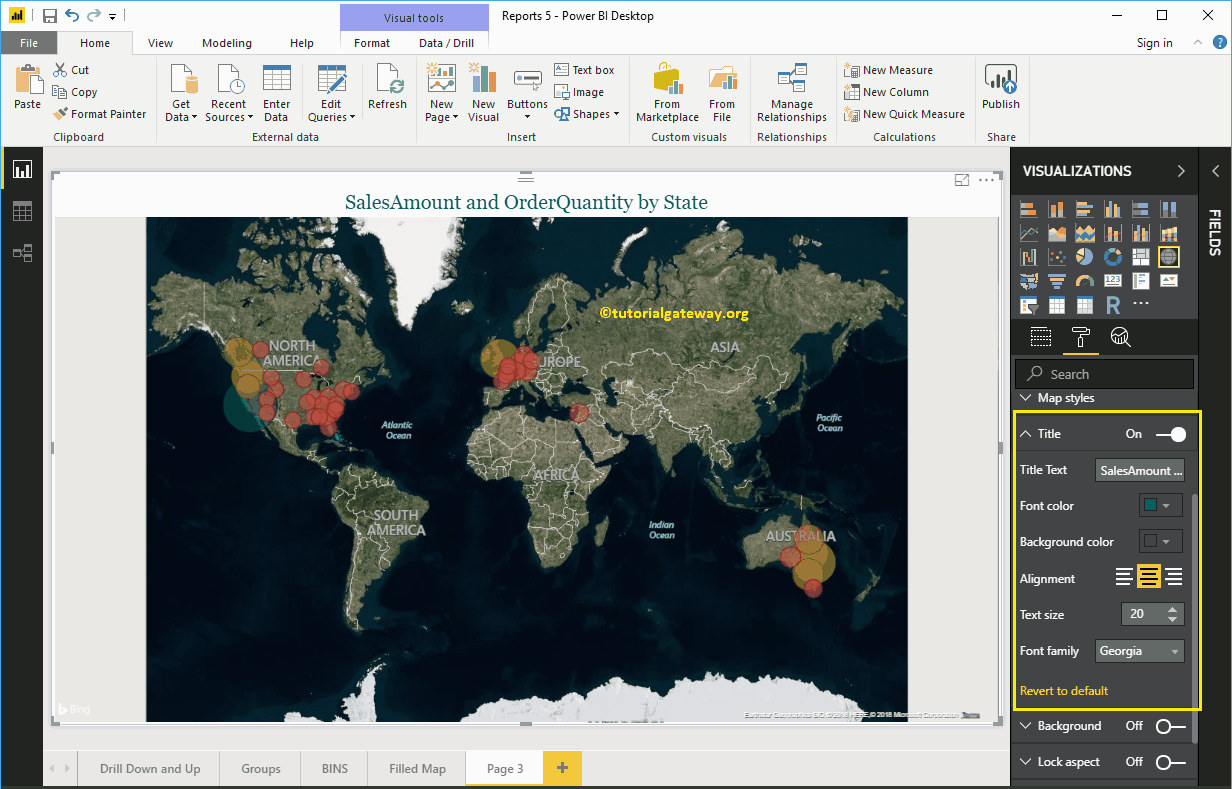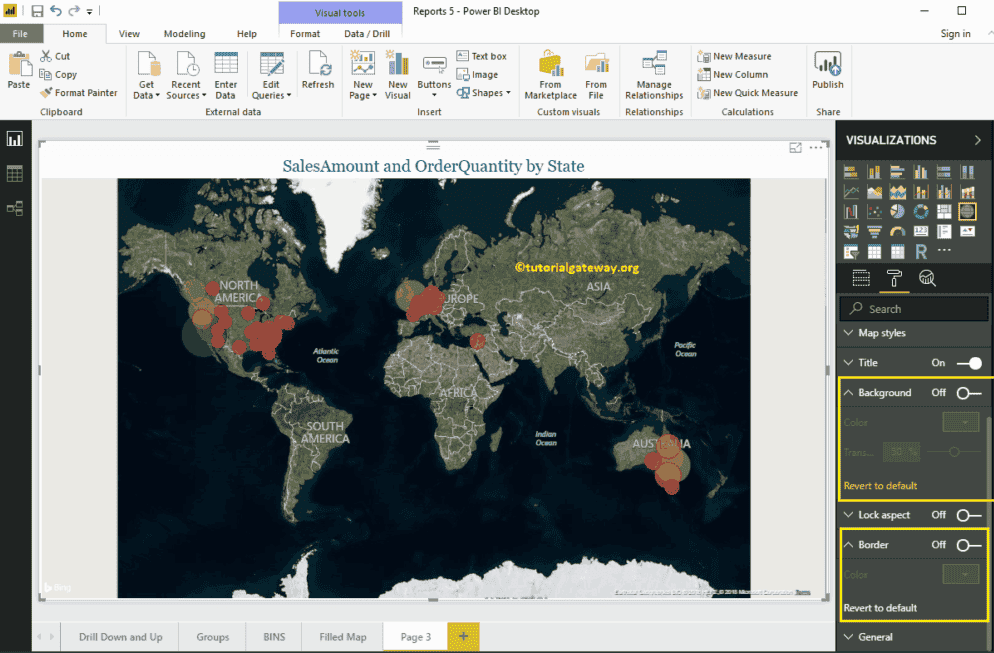Power BI Maps help you to visualize the geological data. Let us see the step by step approach to Create a Map in Power BI with a practical example.
For the Power BI Map demo, we use the World Population Excel data file that we downloaded from the Data bank.
Please visit Connect to Excel to learn the steps included in working with Excel.
How to Create a Map in Power BI
Dropping any geographic data to the Canvas area automatically create a Map. For instance, let me drag and drop the Country Names available in the world Population table to the Canvas.
From the following screenshot, you can notice that the power bi has created a map for you.
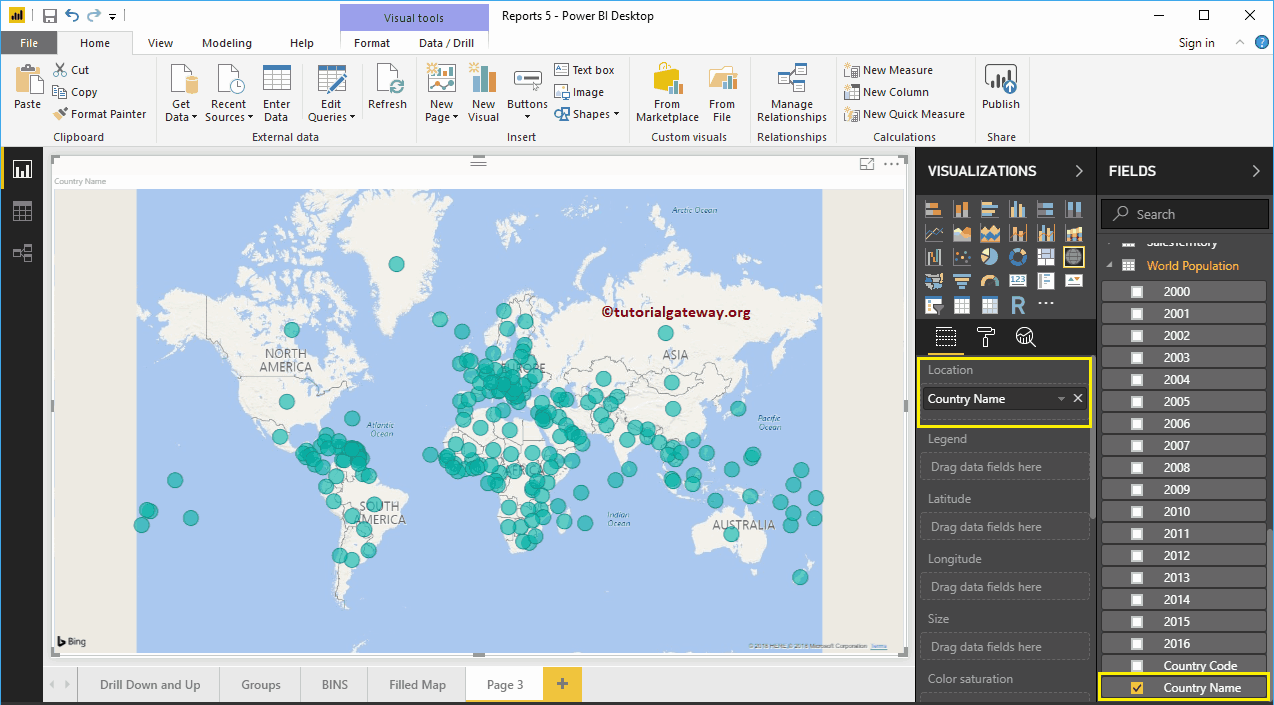
Next, Drag and Release the Population of the year 2016 from Power BI Fields region to the Legend section.
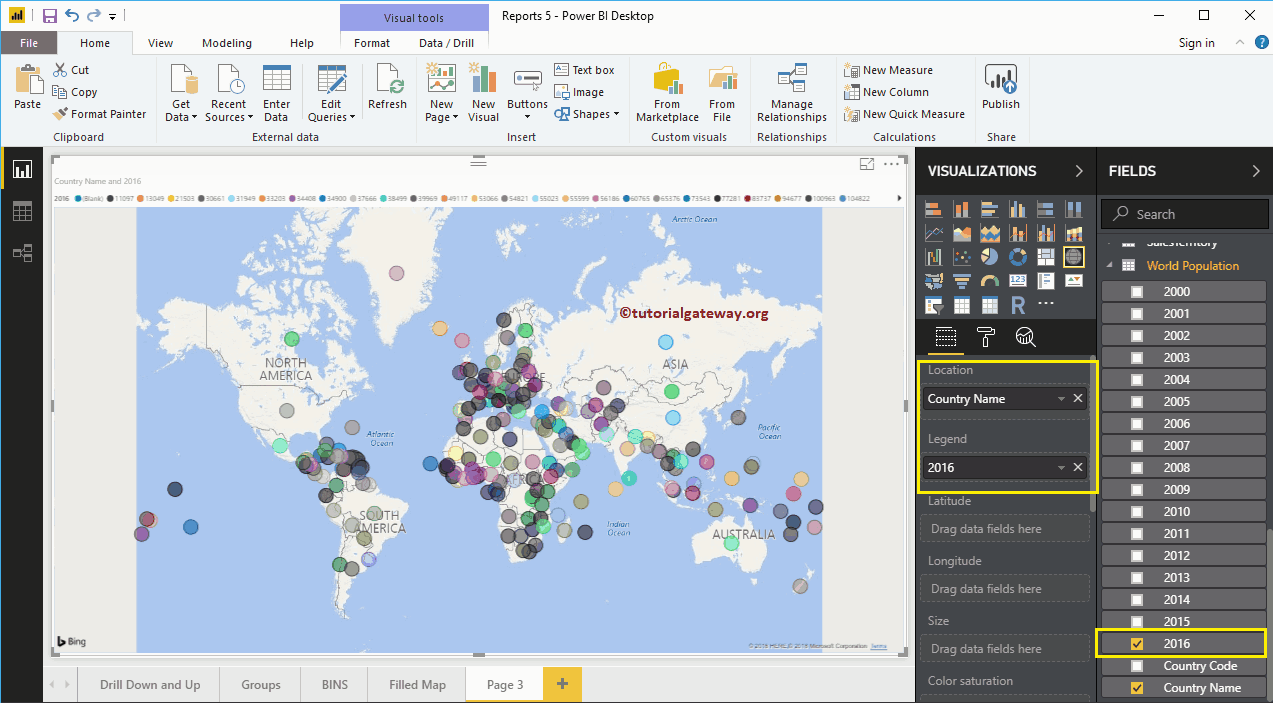
Hover over any bubble to see the country it represents, and the country population.
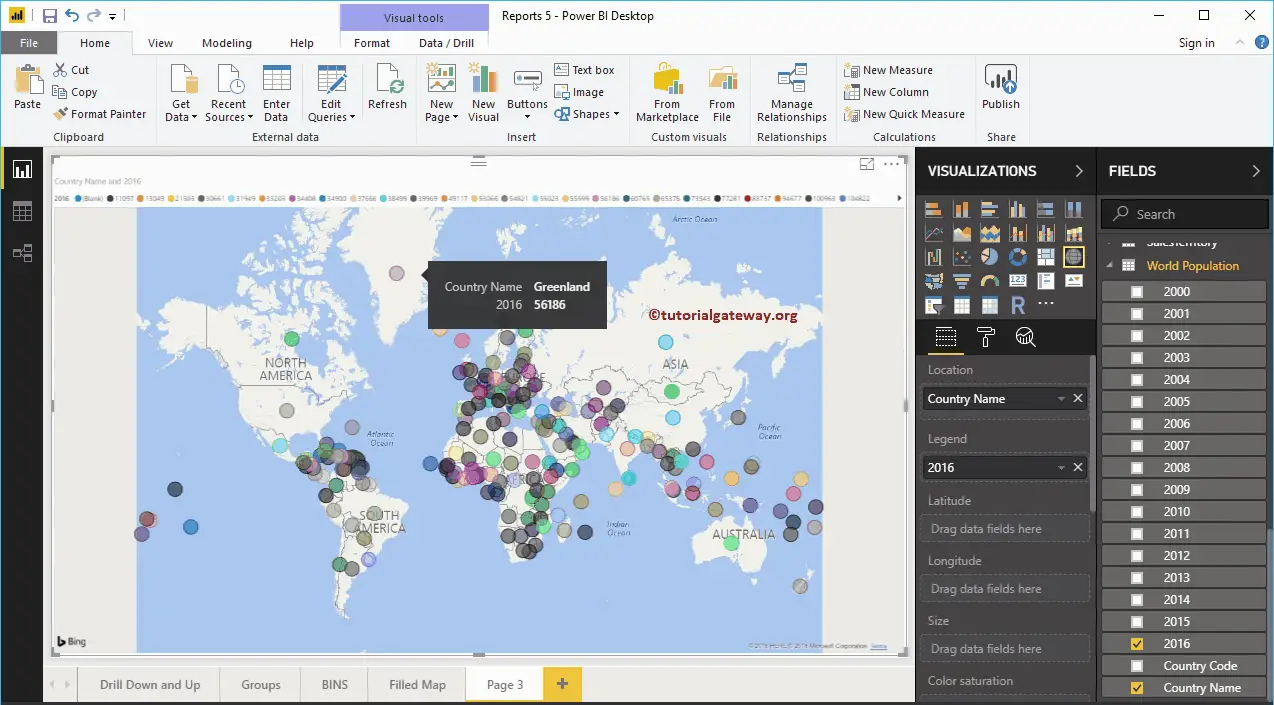
The Second approach to Create a Map in Power BI
First, under the Visualization section, click on the Map. It automatically creates a Map with model data, as we have shown in the below screenshot.
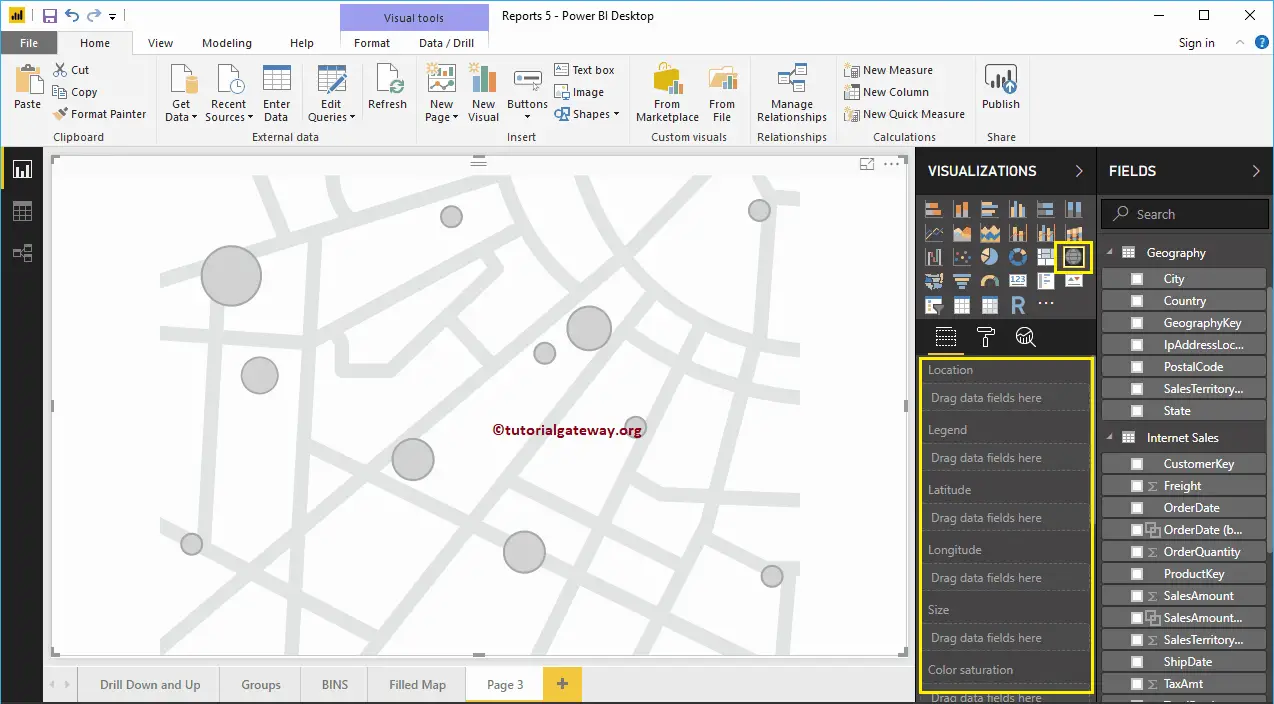
To add data to a Map in Power BI, we should add the required fields:
- Location: Please provide the Geological Column name that draws the Bubbles.
- Legend: Column name that sub-divides the data in the Location section. Something similar to Country, Region, Territory, or Continent
- Latitude and Longitude: If the data contains the latitude and longitude information, you can use them to retrieve the exact location.
- Size: Define the Column that describes the Bubble size.
- Color Saturation: Any Numeric data that decides the Power BI map bubbles color.
Let me drag the State from Fields area to the Location Section. You can achieve this by dragging the State column to the Location section or checkmark the State column.
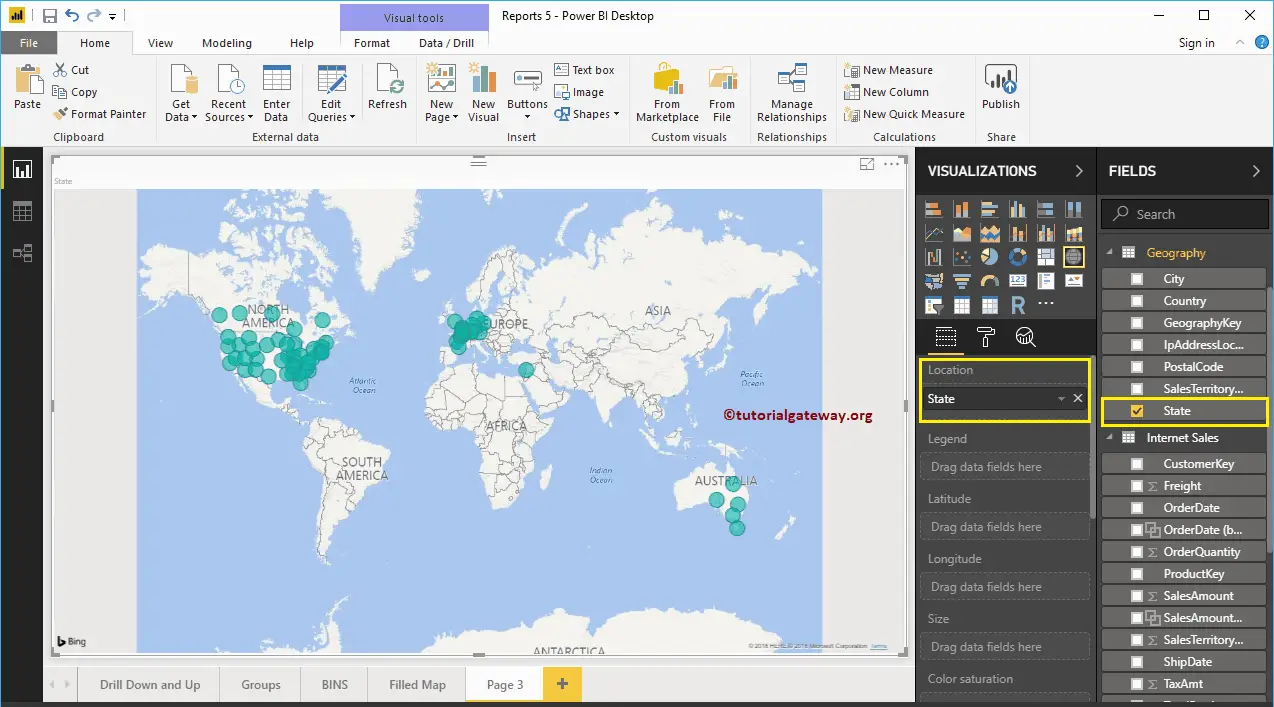
Next, add the Sales Amount to the Size section. Now, you recognize the size difference in the bubbles
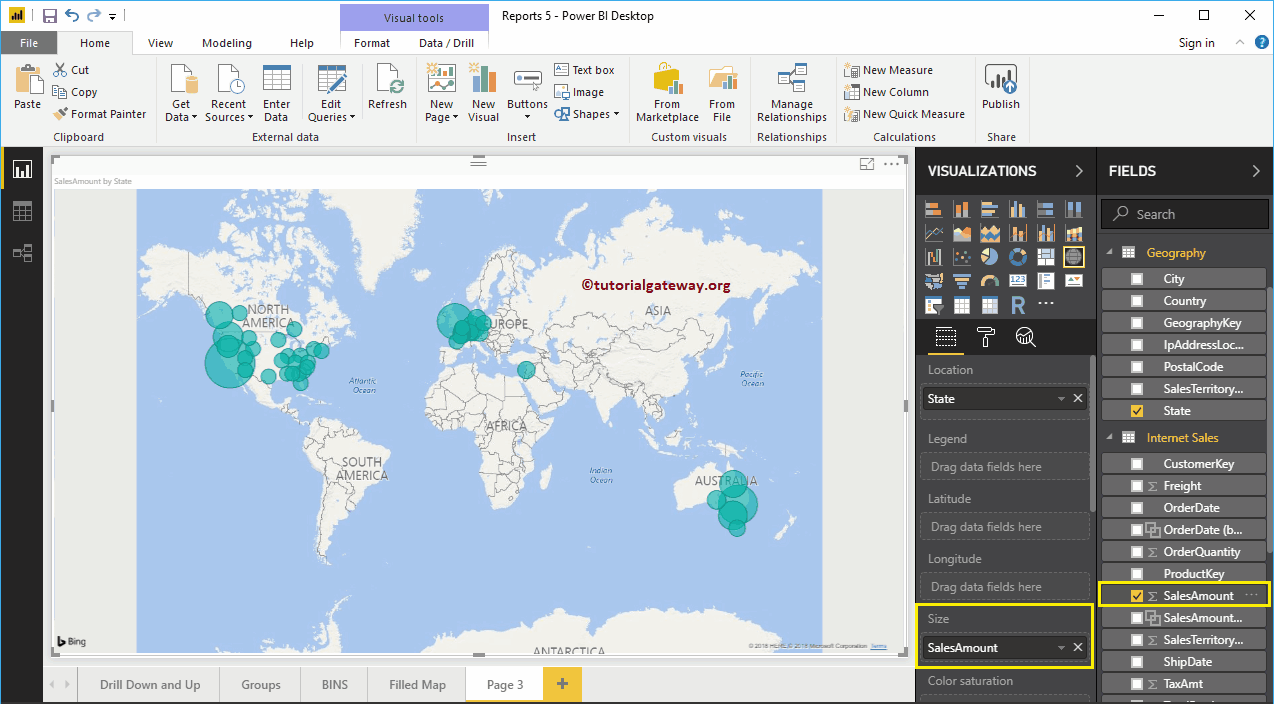
Next, let me add Country Name to the Tooltip section. After this, if you hover-over any bubble, show you the information about the Country, State, and its Sales Amount.
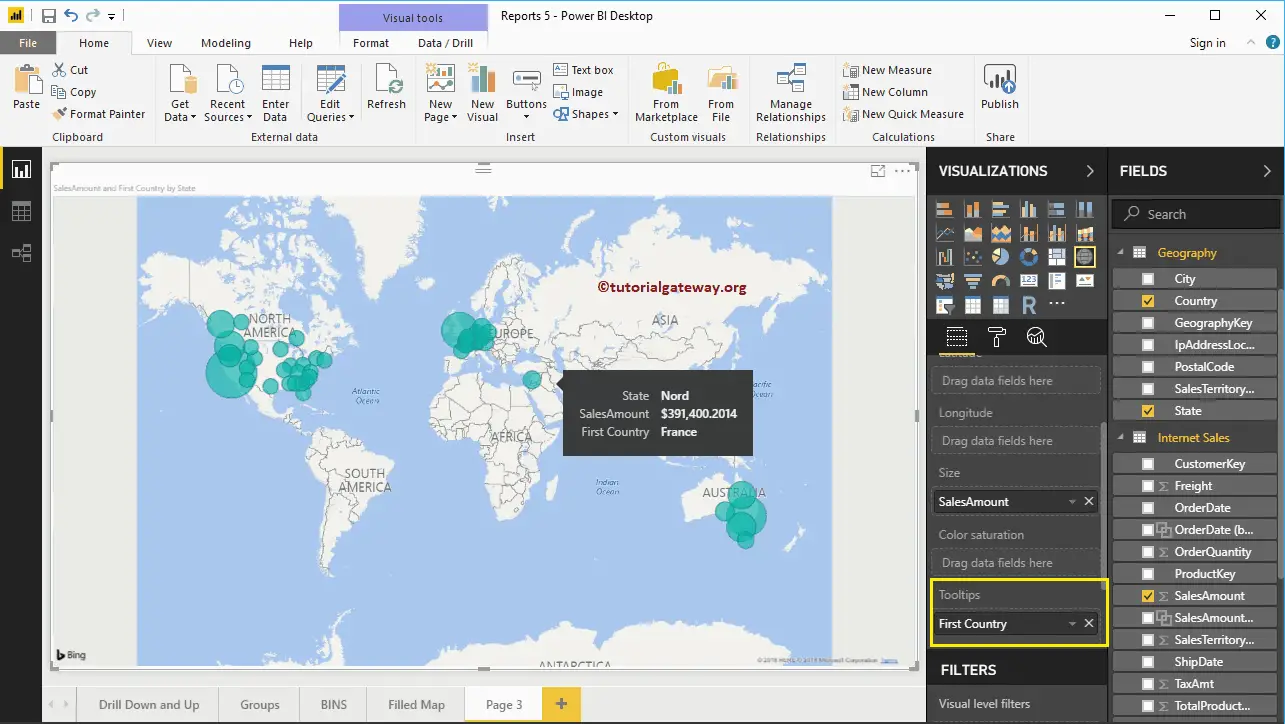
Let me add Country Name to the Legend section. As you can see, the color of bubbles is changed based on the country they represent.
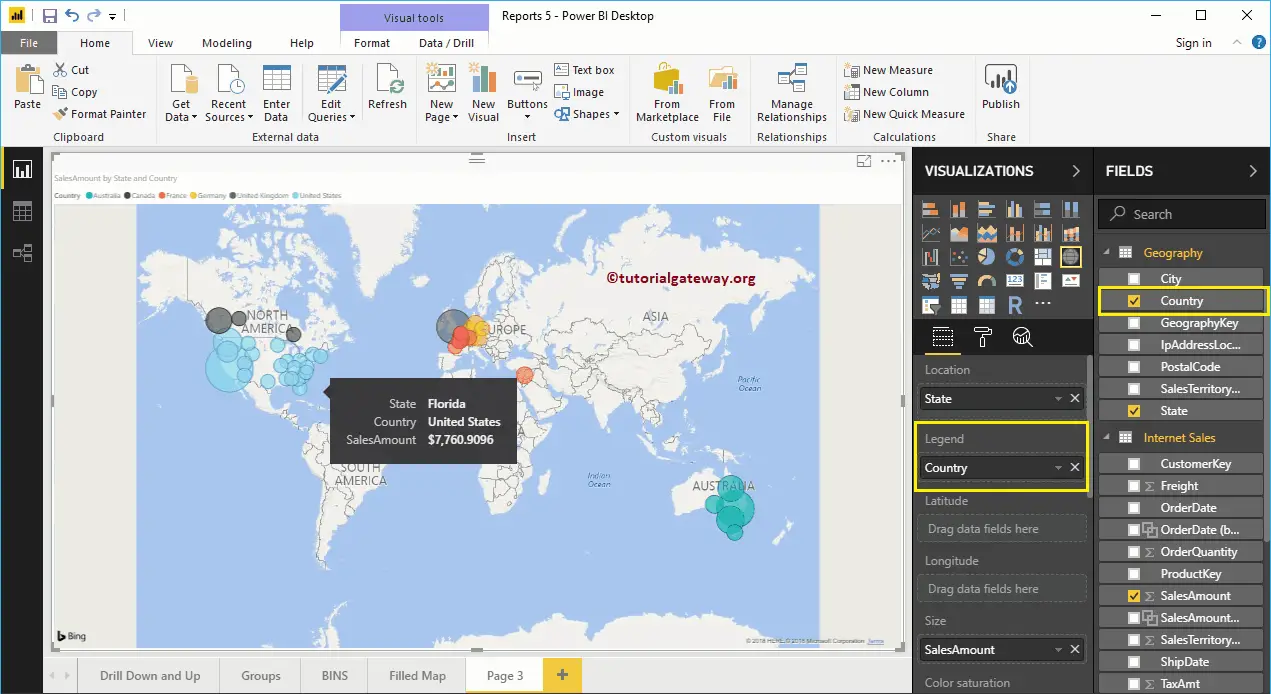
To demonstrate the Color Saturation section of a Power BI map, we added the Order Quantity to the Color Saturation section. From the below Map screenshot, the color of each circle has changed as per the Order Quantity. Remember, you can’t use the Legend and Color Saturation at the same time.
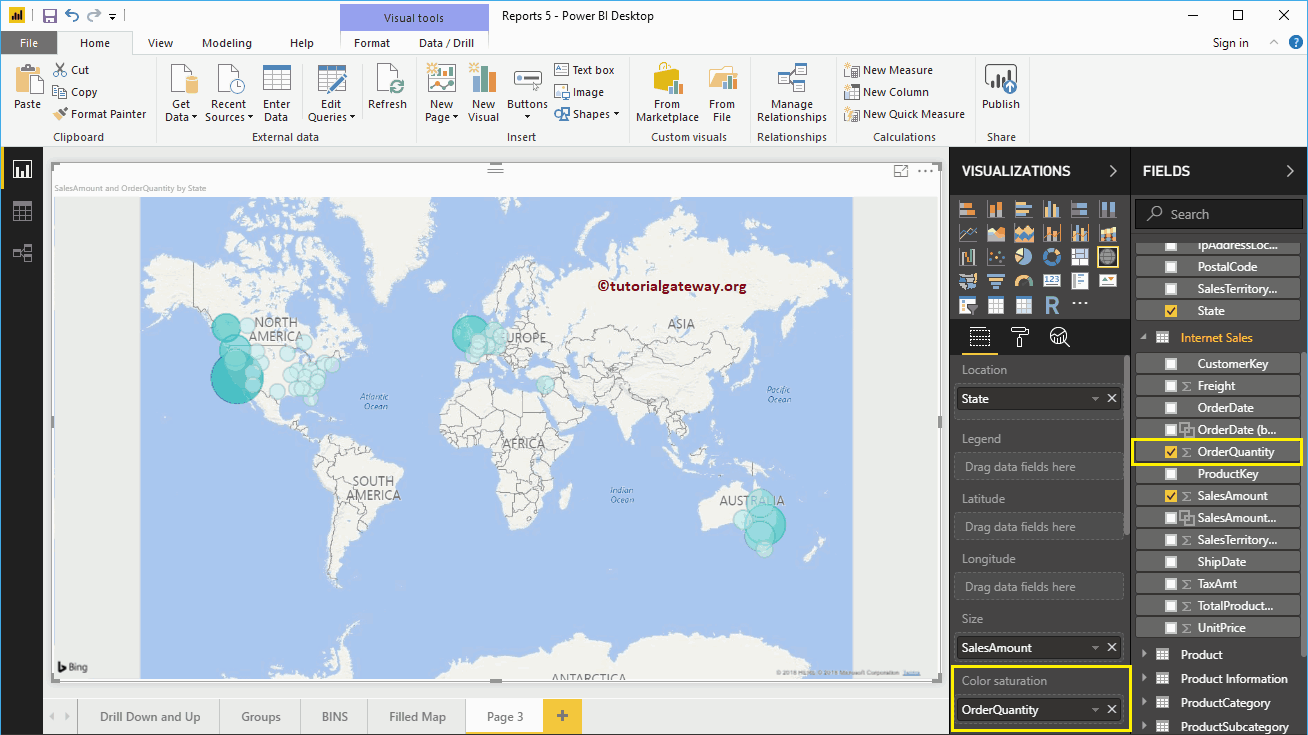
Let me do some quick formatting to this Power BI Map
NOTE: I suggest you refer Format Maps article to understand the formatting options.
